Bates, D., Mächler, M., Bolker, B. and Walker, S. 2015. Fitting linear mixed-effects models using lme4. J. Stat. Softw. 67:1-48.
Bendz Hellgren, M. and Stenlid, J. 1995. Long-term reduction in the diameter growth of butt rot affected Norway spruce,
Picea abies.
For. Ecol. Manag. 74:239-243.

Bloomberg, W. J. and Morrison, D. J. 1989. Relationship of growth reduction in Douglas-fir to infection by Armillaria root disease in southeastern British Columbia.
Phytopathology 79:482-487.

Choi, S.-W. 2003. The relationship between local distribution and abundance of butterflies and weather factors.
Korean J. Ecol. 26:199-202.

Coakley, S. M., Line, R. F. and McDaniel, L. R. 1988. Predicting stripe rust severity on winter wheat using an improved method for analyzing meteorological and rust data.
Phytopathology 78:543-550.

Coetzee, M. P. A., Wingfield, B. D. and Wingfield, M. J. 2018. Armillaria root-rot pathogens: species boundaries and global distribution.
Pathogens 7:83.



Collective Work 1988-2010. Short-term forecast of occurrence of most important insect pests and infectious diseases of forest trees in Poland. Instytut Badawczy LeĹnictwa, SÄkocin Stary, Poland. (in Polish).
Cruickshank, M. 2020. Response of planted and natural Douglas fir tree roots infected with Armillaria root disease: lesion type, time-to-callus, infection timing, and influence of site and environmental factors on lesion formation.
Can. J. Plant Pathol. 42:377-389.

Cruickshank, M. G. 2011. Yield reduction in spruce infected with
Armillaria solidipes in the southern interior of British Columbia.
For. Pathol. 41:425-428.

Cruickshank, M. G., Morrison, D. J. and Lalumière, A. 2011. Site, plot, and individual tree yield reduction of interior Douglas-fir associated with non-lethal infection by Armillaria root disease in southern British Columbia.
For. Ecol. Manag. 261:297-307.

Duggar, B. M. 1909. Fungous diseases of plants. Ginn and Co., New York, NY, USA. pp. 1-508.
Filip, G. M., Maffei, H. M., Chadwick, K. L. and Max, T. A. 2010.
Armillaria root disease-caused tree mortality following silvicultural treatments (shelterwood or group selection) in an Oregon mixed-conifer forest: insights from a 10-year case study.
Western J. Appl. For. 25:136-143.

Franceschi, V. R., Krokene, P., Christiansen, E. and Krekling, T. 2005. Anatomical and chemical defences of conifer bark against bark beetles and other pests.
New Phytol. 167:353-376.

Gäumann, E. 1950. Principles of plant infection. Hafner Publishing Co., New York, NY. 543 pp.
Goheen, D. J. and Otrosina, W. J. 1998. Characteristics and consequences of root diseases in forests of Western North America. In: Userâs guide to the western root disease model, version 3.0, General Technical Report PSW-GTR 165, eds. by S. J. Frankel, pp. 3-8. U.S. Department of Agriculture, Forest Service, Pacific Southwest Research Station, Albany, CA, USA.
Guide to Forest Protection. 1988. PaĹstwowe Wydawnictwa Rolnicze i LeĹne (State Agricultural and Forestry Publishing House), Warszawa, Poland. 304 pp (in Polish).
Guillaumin, J. J., Lung, B., Romagnesi, H., Marxmuller, H., Lamoure, D., Durrier, G., Berthelay, S. and Mohamed, C. 1985. Systematique des Armillaria du groupe Mellea. Consequences phytopathologiques. Eur. J. For. Pathol. 15:268-277.
Guillaumin, J.-J., Mohammed, C., Anselmi, N., Courtecuisse, R., Gregory, S. C., Holdenrieder, O., Intini, M., Lung, B., Marxmßller, H., Morrison, D., Rishbeth, J., Termorshuizen, A. J., Tirrò, A. and Van Dam, B. 1993. Geographical distribution and ecology of the
Armillaria species in Western Europe.
Eur. J. For. Pathol. 23:321-341.

Kaliszewski, A., Lech, P. and Oszako, T. 2007. The occurrence of, and economic losses caused by
Armillaria in the Western Carpathian Mts.
Acta Mycol. 42:219-233.


Keca, N. 2005. Characteristics of Armillaria species development and their growth at different temperatures.
Glasnik Sumarskog Fakulteta 91:149-162 (in Serbian).

Kile, G. A., Guillaumin, J. J., Mohammed, C. and Watling, R. 1994. Biogeography and pathology of Armillaria. In: Proceedings of the 8th IUFRO Conference on Root and Butt Rots, eds. by M. I. Johansson and J. Stenlid, pp. 411-436. Swedish University of Agricultural Sciences, Uppsala, Sweden.
Kile, G. A., McDonald, G. I. and Byler, J. W. 1991. Ecology and disease in natural forests. In: Armillaria root disease, USDA Forest Service Agriculture Handbook No. 691, eds. by C. G. I. Shaw and G. A. Kile, pp. 102-121. United States Department of Agriculture, Washington, DC, USA.
Kile, G. A. and Watling, R. 1983.
Armillaria species from south-eastern Australia.
Trans. Br. Mycol. Soc. 81:129-140.

Kliejunas, J. T. 2011. A risk assessment of climate change and the impact of forest diseases on forest ecosystems in the Western United States and Canada. General Technical Report PSW-GTR-236. U.S. Department of Agriculture, Forest Service, Pacific Southwest Research Station, Albany, CA, USA. 70 pp.

Kolb, T. E., Fettig, C. J., Ayres, M. P., Bentz, B. J., Hicke, J. A., Mathiasen, R., Stewart, J. E. and Weed, A. S. 2016. Observed and anticipated impacts of drought on forest insects and diseases in the United States.
For. Ecol. Manag. 380:321-334.

Kolk, A., Lech, P. and Sierota, Z. 1996. OkreĹlenie stref zagroĹźeĹ lasĂłw polski przez czynniki biotyczne. Biblioteka Monitoringu Ĺrodowiska. PIOĹ, Warszawa, Poland. 136 pp.
Kubiak, K., ŝóĹciak, A., Damszel, M., Lech, P. and Sierota, Z. 2017. Armillaria pathogenesis under climate changes.
Forests 8:100.

La Porta, N., Capretti, P., Thomsen, I. M., Kasanen, R., Hietala, A. M. and Von Weissenberg, K. 2008. Forest pathogens with higher damage potential due to climate change in Europe.
Can. J. Plant Pathol. 30:177-195.

Landau, S., Mitchell, R. AC., Barnett, V., Colls, J. J., Craigon, J. and Payne, R. W. 2000. A parsimonious, multiple-regression model of wheat yield response to environment.
Agric. For. Meteorol. 101:151-166.

Lech, P. 2003. Threat caused by root rot diseases to Norway spruce stands in Poland as reviled by the results of the phytopathological monitoring of commercial forests. In: Norway spruce stands: status, problems, perspectives, eds. by A. A. Grzywacz, pp. 92-107 Polskie Towarzystwo LeĹne, UstroĹ-Jaszowiec, Poland. (in Polish).
Lech, P. and ŝóĹciak, A. 2006a. Conditions of Armillaria root rot occurrence in the forests of the Beskid Ĺťywiecki Mountains. For. Res. Pap. 2:33-49 (in Polish).
Lech, P. and ŝóĹciak, A. 2006b. Growth of Scots pine seedlings and Armillaria ostoyae rhizomorphs under elevated air CO2 concentration conditions. For. Res. Pap. 4:64-67 (in Polish).
Lech, P. and ŝóĹciak, A. 2017. Influence of elevated CO
2 concentrations on the growth of
Armillaria ostoyae (Romagn.) Herink rhizomorphs
in vitro.
For. Res. Pap. 78:191-197 (in Polish).

Lesowskij, A. W. and Martyszeczkina, A. F. 1978. Study of some factors affecting the resistance of oak forest stands to pathogens. For. Agro-forest Melior. 51:48-55 (in Russian).
Livingstone, W. H., Cromell, W. H. and French, D. W. 1982.
Armillariella mellea infection in balsam fir plantation in north central Minnesota. Minnesota Forestry Research Notes, No. 281. University of Minnesota, College of Forestry, St. Paul, MN, USA. 2 pp.
Lockman, I. B. and Kearns, H. S. J. 2016. Forest root diseases across the United States. General Technician Report RMRS-GTR-342. U.S. Department of Agriculture, Forest Service, Rocky Mountain Research Station, Ogden, UT, USA. 55 pp.
LĂźdecke, D. 2021. sjPlot: data visualization for statistics in social science R package version 2.8.10. R Foundation for Statistical Computing, Vienna, Austria.
Meijerink, A. M. J., de Brouwer, H. A. M., Mannaerts, C. M. and Valenzuela, C. R. 1994. Introduction to use of geographic information systems for practical hydrology.
IHP - IV M 2.3. ITC Publication. 23: International Institute for Geo-Information Science and Earth Observation, Enschedem Netherlands.
Mihail, J. D., Bruhn, J. N. and Leininger, T. D. 2002. The effects of moisture and oxygen availability on rhizomorph generation by
Armillaria tabescens in comparison with
A. gallica and
A. mellea.
Mycol. Res. 106:697-704.

Murray, M. P. and Leslie, A. 2021. Climate, radial growth, and mortality associated with conifer regeneration infected by root disease (
Armillaria ostoyae).
For. Chronicle 97:43-51.

Mychayliv, O. 2011. Threat of forest stands caused by Armillaria in relation to weather condition. Sci. Bull. UNFU 21:61-67 (in Ukrainian).
Mychayliv, O. and MaĹecka, M. 2012. Relations between the area of root rot diseases occurrence (Heterobasidion annosum and Armillaria spp.) and selected weather components in last 35 years in Poland. In: Proceeding of the IUFRO XIII International Conference on Root and Butt Root of Forest Trees; In : P. Capretti, C. Comparini, M. Garbelotto, N. La Porta and A. Santini pp 209-214. Firenze University Press, Firenze, Italy.
Pavlov, I. N. 2015. Biotic and abiotic factors as causes of coniferous forests dieback in Siberia and Far East.
Contemp. Probl. Ecol. 8:440-456.


Pearce, M. H. and Malajczuk, N. 1990. Factors affecting the growth of Armillaria luteobubalina rhizomorphs in soil. Mycol. Res. 94:38-48.
R Core Team 2023. R: A Language and Environment for Statistical Computing. R Foundation for Statistical Computing, Vienna, Austria.
Rishbeth, J. 1968. The growth rate of
Armillaria mellea.
Trans. Br. Mycol. Soc. 51:575-586.

Rishbeth, J. 1972. Resistance to fungal pathogens of tree roots.
Proc. R. Soc. B Biol. Sci. 181:333-351.


Rishbeth, J. 1978. Effects of soil temperature and atmosphere on growth of
Armillaria rhizomorphs.
Trans. Br. Mycol. Soc. 70:213-220.

Robinson, R. M. and Morrison, D. J. 2001. Lesion formation and host response to infection by
Armillaria ostoyae in the roots of western larch and Douglas-fir.
For. Pathol. 31:371-385.

Roy, B. A., GĂźsewell, S. and Harte, J. 2004. Response of plant pathogens and herbivores to a warming experiment.
Ecology 85:2570-2581.

Sakamoto, Y. 2018. Influences of environmental factors on fruiting body induction, development and maturation in mushroom-forming fungi.
Fungal Biol. Rev. 32:236-248.

Sharma-Poudyal, D. and Chen, X. M. 2011. Models for predicting potential yield loss of wheat caused by stripe rust in the U.S. Pacific Northwest.
Phytopathology 101:544-554.


Shaw, C. G. 3rd and Kile, G. A. 1991. Armillaria root disease. Agricultural Handbook No. 691. U.S. Department of Agriculture, Forest Service, Washington, DC, USA. 233 pp.
Shaw, C. G. 3rd and Toes, E. H. A. 1977. Impact of Dothistroma needle blight and Armillaria root rot on diameter growth of Pinus radiata. Phytopathology 67:1319-1323.
Sierota, Z., MaĹecka, M. and Stocka, T. 2003. Short-term forecast of the occurrence of major pests and infectious diseases of forest trees in 2002. Instytut Badawczy LeĹnictwa, SÄkocin Stary, Poland. 105 pp. (in Polish).
Smith, R. S. 1984. Root disease-caused losses in the commercial coniferous forests of the western United States. USDA Forest Service, Forest Pest Management Methods Application Group, Fort Collins, CO, USA. 21 pp.
Smith, A. M. and Griffin, D. M. 1971. Oxygen and the ecology of Armillaria elegans Heim. Aust. J. Biol. Sci. 24:213-262.
Stevens, R. B. 1960. Cultural practices in disease control. In:
Plant pathology: an advanced treatise, 3:eds. by J. G. Horsfall and A. E. Dimond, pp. 357-429. Academic Press, New York, NY, USA.

Sturrock, R. N., Frankel, S. J., Brown, A. V., Hennon, P. E., Kliejunas, J. T., Lewis, K. J., Worrall, J. J. and Woods, A. J. 2011. Climate change and forest diseases.
Plant Pathol. 60:133-149.

Szubin, W. I. 1976. Fructification of Armillariella mellea (Vahl ex Fr.) Karst in the North-West of the European part of the USSR. Mycol. Phytopathol. 10:128-133 (in Russian).
Wickham, H. 2016. ggplot2: elegant graphics for data analysis. Springer-Verlag, New York, NY, USA.
Wu, B. M., Subbarao, K. V. and van Bruggen, A. H. C. 2005. Analyses of the relationships between lettuce downy mildew and weather variables using geographic information system techniques.
Plant Dis. 89:90-96.


ŝóĹciak, A. 1999. The occurrence of species from the Armillaria (Fr.: Fr.) Staude genus in forests in Poland. For. Res. Pap. A 890:29-40 (in Polish).
ŝóĹciak, A. 2003. Distribution of the Armillaria species and their host plants in Poland. For. Res. Pap. 3:7-22 (in Polish).




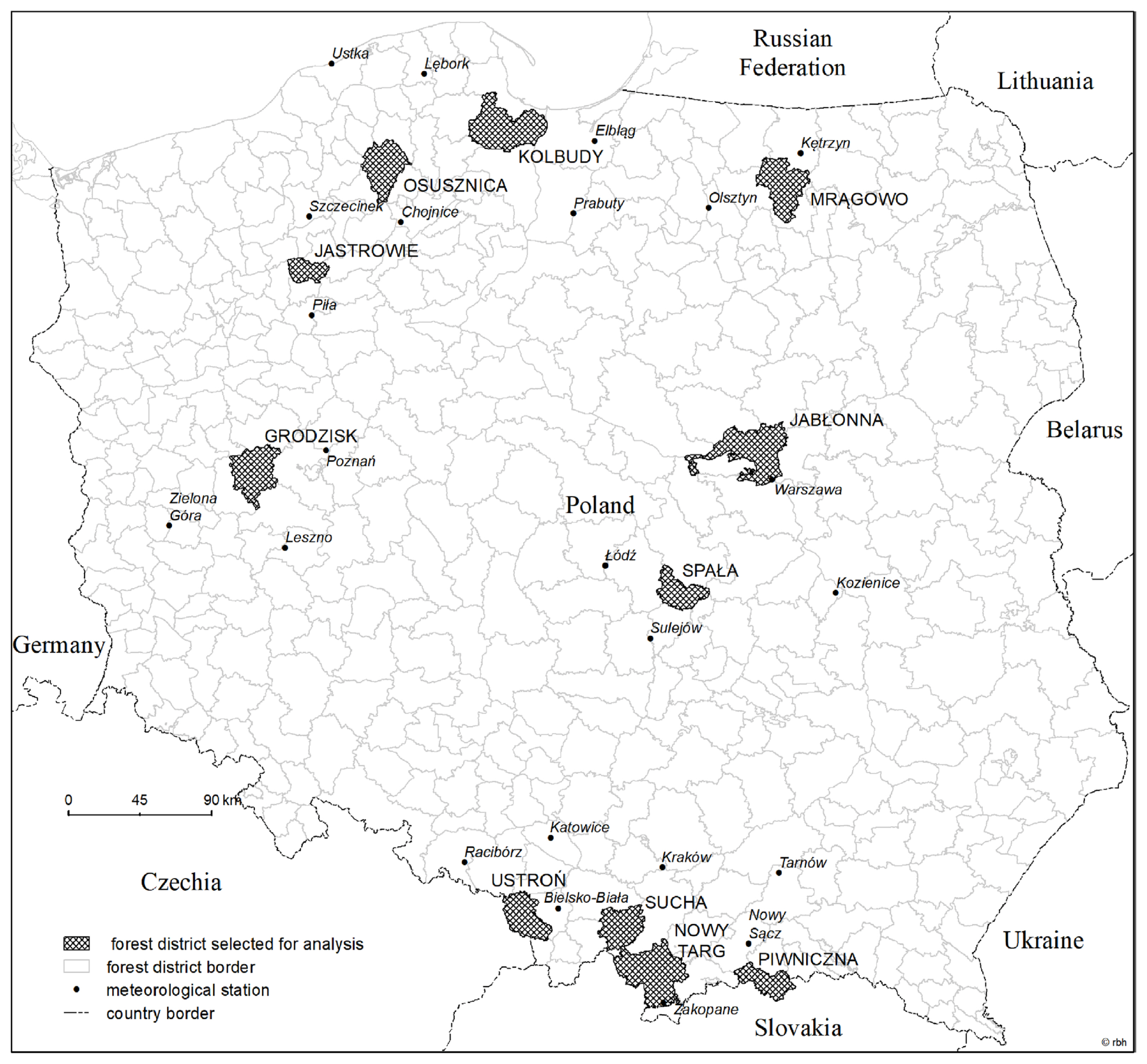
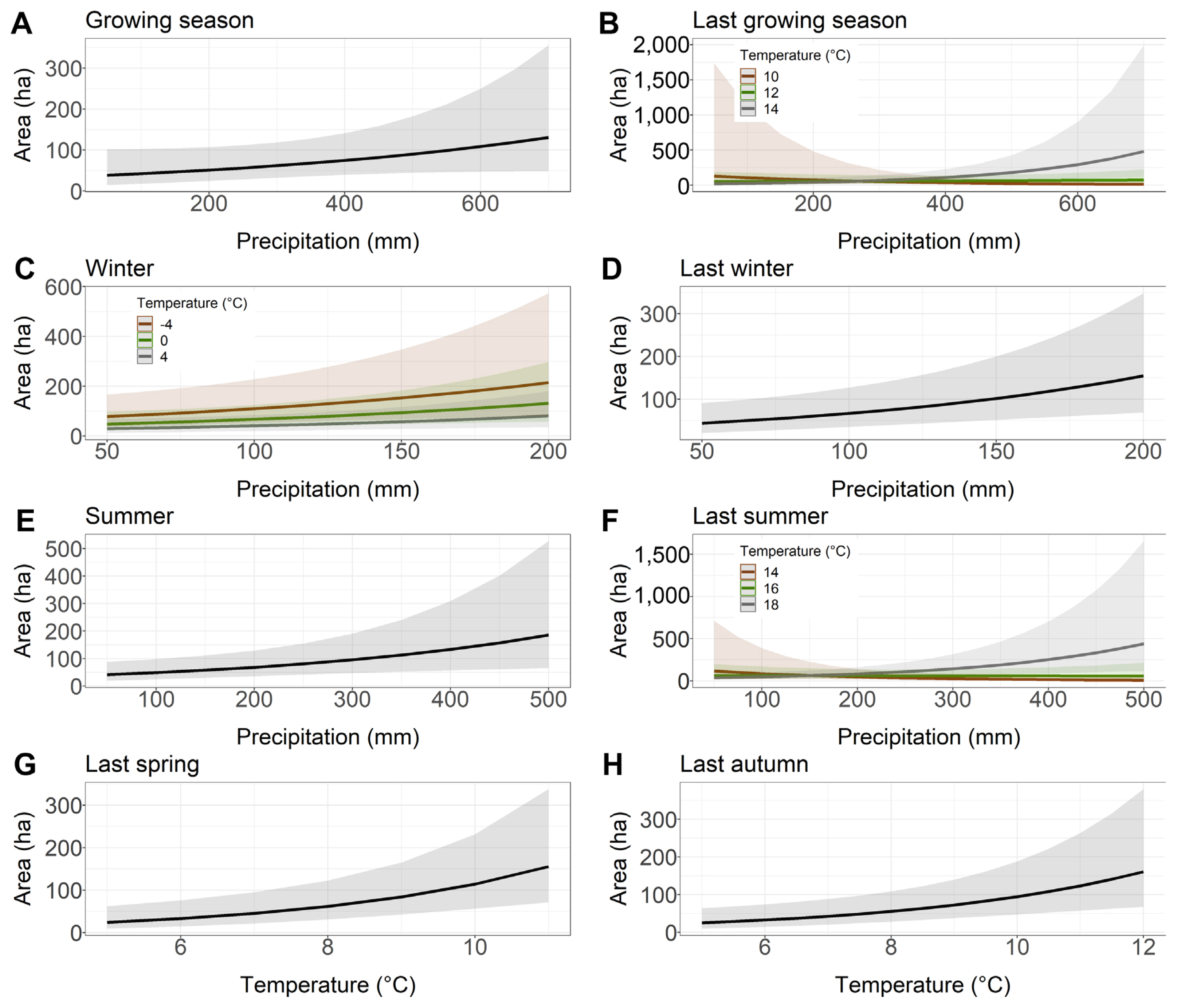
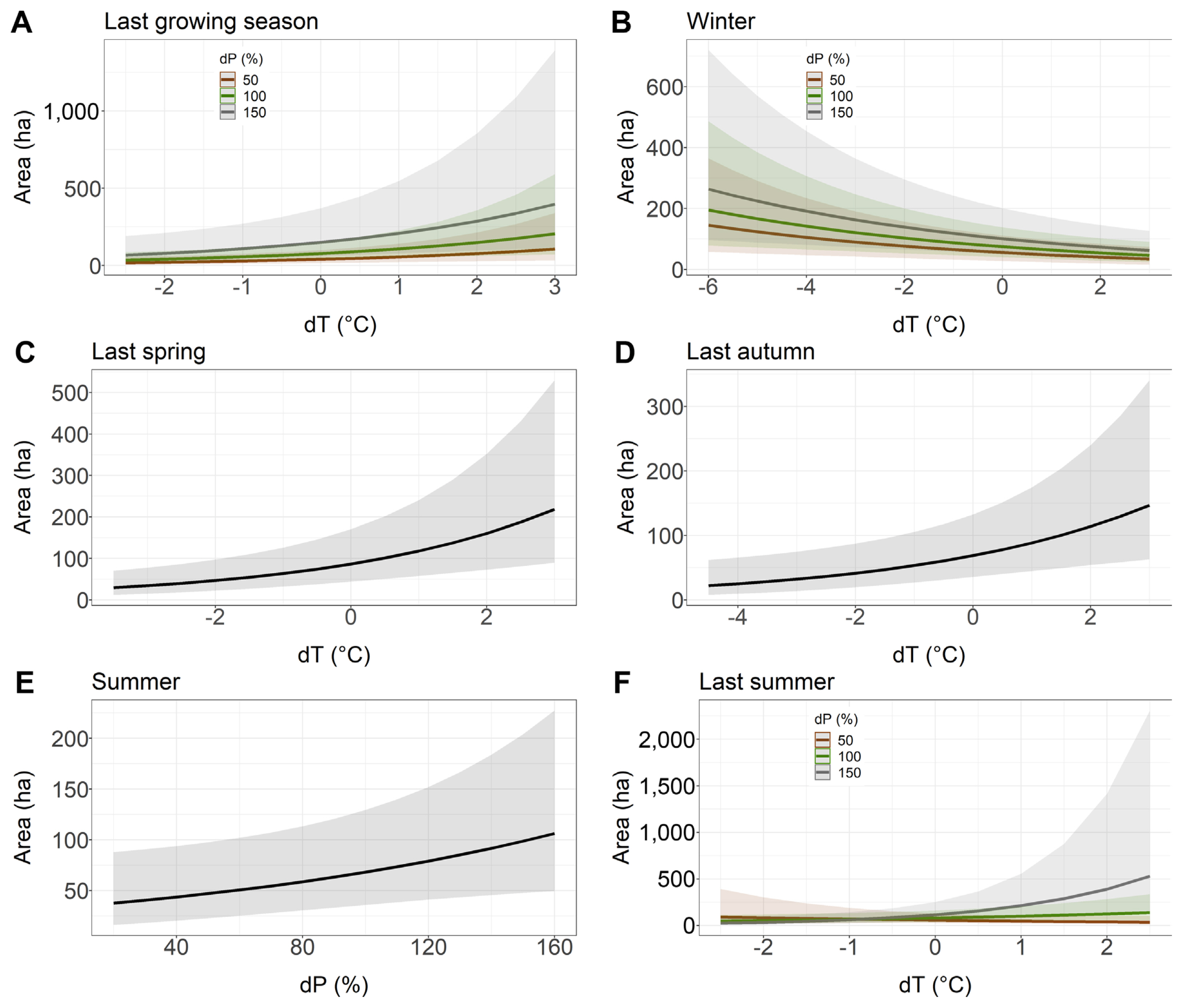

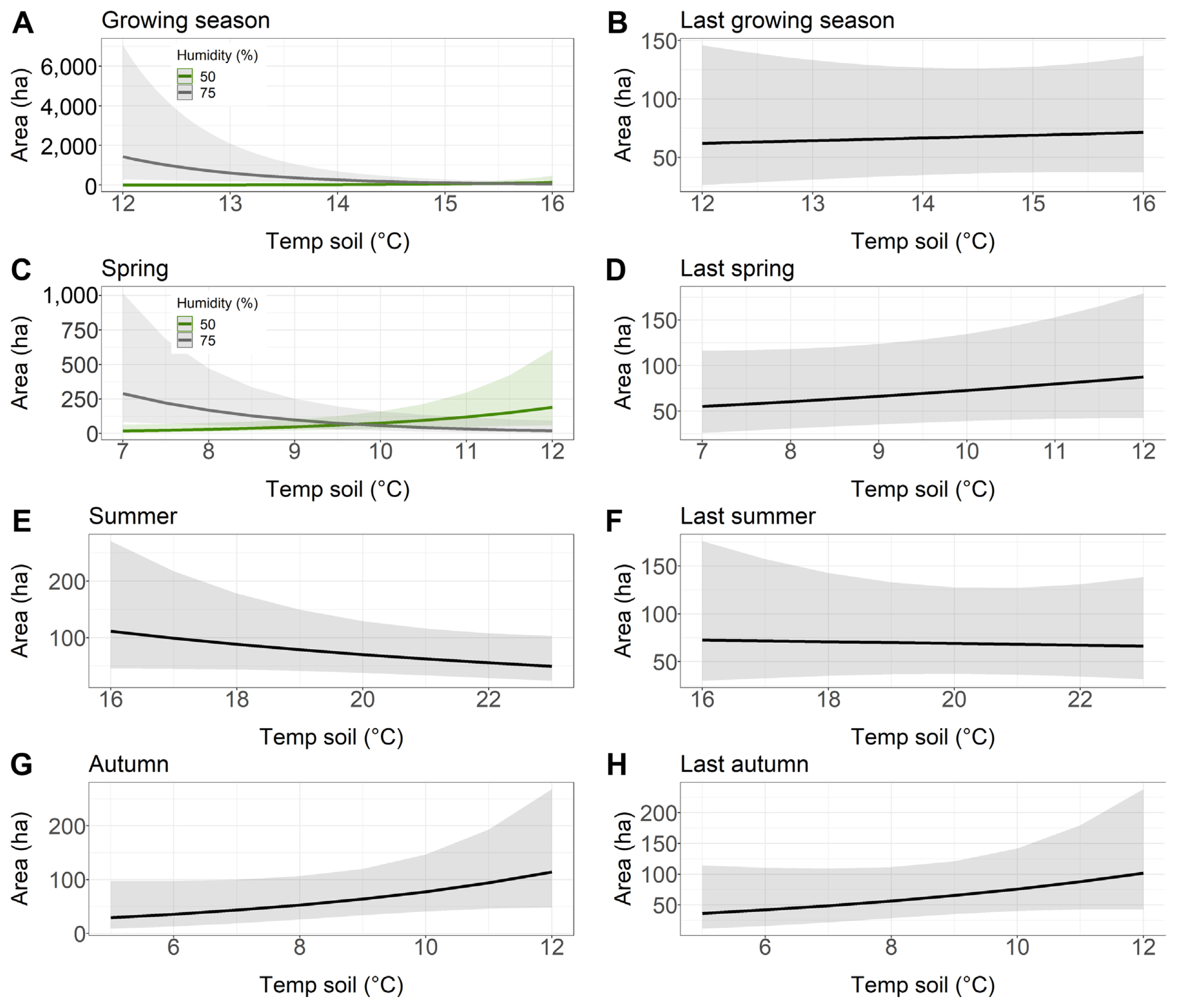
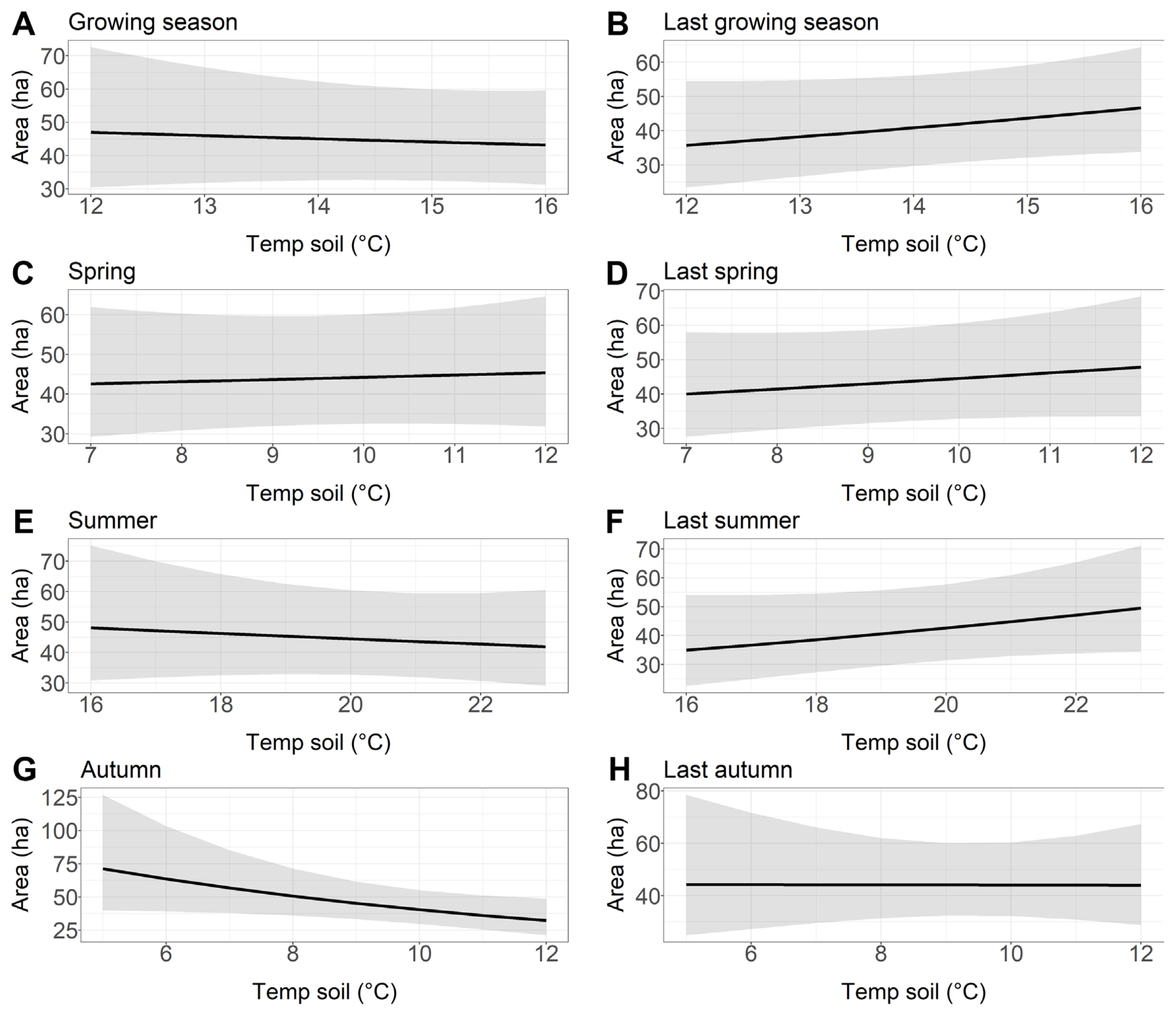
 PDF Links
PDF Links PubReader
PubReader ePub Link
ePub Link Full text via DOI
Full text via DOI Full text via PMC
Full text via PMC Download Citation
Download Citation Supplement1
Supplement1 Print
Print






